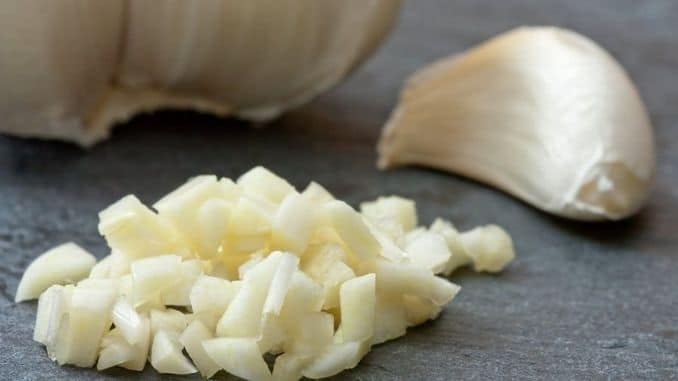
Influenza, or the flu, is an infectious virus that can occur in individuals any time of the year. However, the Centers for Disease Control and Prevention (CDC) has found that the number of influenza cases increases beginning in October and continuing through March.
During the 2016-2017 flu season, the CDC reported that the flu shot was 48 percent effective at protecting otherwise healthy patients from contracting the influenza virus. The year before, it was 47 percent effective. With these effectiveness rates, if you get the flu shot or not, you may still come down with the virus sometime this year.
Long before the flu shot was ever invented, mothers, fathers and grandparents were administering age-old antidotes for the nasty flu virus that threatened the health of their families. We’ve tested some of those flu season home remedies and found several that will help treat the flu if it lands in your lap this year. We’ve also got a few ideas for flu prevention that may help you. Read on for some great tips on staying healthy during this extra-contagious time of year.

We’ll Start With Prevention
As Benjamin Franklin once said, “An ounce of prevention is worth a pound of cure.” We couldn’t agree more. There are lots of little things you can do to increase your chances of avoiding a flu infection this season.
1. Increase Your Water Intake
We’ve heard this over and over. But getting enough water is imperative to your immune system. When your body is properly hydrated, the mucous in your nose, mouth, gastrointestinal tract and lungs is produced at an optimal rate. That mucous prevents bacteria and viruses from invading the body’s sensitive areas. Water is also important for helping your kidneys flush toxins from the body.
One very easy way to increase your water consumption is to fill a reusable water bottle every night before bed. Keep it close, such as on your nightstand. Then, right when you wake up before you do anything else, drink it all. After sleeping for eight hours, your organs are thirsty. You may not feel particularly thirsty, but once you begin drinking, you’ll be surprised at how easy it is to finish the entire bottle within a few minutes. Throughout the day, refill that water bottle and keep it close by.
2. Consider Adding a D3 Supplement During Flu Season
The American Journal of Clinical Nutrition published a study in 2010. During flu season, they gave one group of school children a low dose of vitamin D3 and the other group a placebo. After tracking these students, they found that the children who took the D3 supplements were 42 percent less likely to be infected with the influenza virus than the group who didn’t receive the vitamin.
3. Add Some Real Cinnamon to Your Diet
Ayurvedic medicine practitioners recommend true cinnamon for its immune-boosting properties. True cinnamon is Ceylon cinnamon. Beware of the cinnamon impostors (cassia and Saigon varieties).
Elaine Moore, an expert in autoimmune disease education, advises her readers to use cinnamon to boost the body’s immune response to colds and flu. Moore points out the antibacterial and antiviral properties of the spice and contends that cinnamon helps strengthen and protect the body.
Adding cinnamon to your diet is simple. Put a teaspoon in your morning bowl of oatmeal or your fruit smoothie. Add it to your baked goods and stir your hot tea with a cinnamon stick.
4. Diffuse Essential Oils in Your Home or Office
Upon entering Peggy Daly’s Complementary Medicine Center in Indianapolis, one may notice a pleasant aroma filling the air. Daly swears by a blend of rosemary, lemongrass and eucalyptus essential oils diffused through the clinic to keep germs at bay during flu season.
Daly’s blend actually works. Psychiatry Research Journal put out a study showing that inhaling rosemary can diminish free radicals in the body, thus boosting the immune system. Eucalyptus is a natural antibacterial and antiseptic. It reduces inflammation and clears the lungs. Lemongrass has been shown to inhibit microbial growth. All three of these powerhouse essential oils together can make an impact on the spread of infections this flu season.
5. Use a Homemade, Alcohol-free Hand Sanitizer
CBS Atlanta referenced a study about the negative effects of most hand sanitizers. The study finds that Triclosan, the active ingredient in nearly all commercial hand sanitizers, eliminates the good bacteria on your hands which allows the growth of antibiotic-resistant bacteria. We’ve got a natural hand sanitizer recipe that’s perfect to use when soap and water are not available.
Homemade Hand Sanitizer
- 2 ounces pure aloe vera juice (or water)
- 20 drops wild orange essential oil
- 10 drops clove essential oil
- 10 drops rosemary essential oil
- 5 drops of eucalyptus essential oil
Combine the ingredients in a small spray bottle. Keep your homemade hand sanitizer available for icky situations. This wonderful-smelling blend has antifungal, antiseptic and antimicrobial properties to keep your hands germ-free when you need it.
Tried-and-True Flu Season Home Remedies
If the flu does happen to invade your home this year, we’ve got some tried and true flu season home remedies to get you back on your feet in a hurry. The drugstore is full of cold and flu medicines that claim to help you get better when you’ve caught a bug. Sadly, most of those products will do nothing but mask your symptoms so you can push through the day without a fever and sniffles. They’re actually working against the body’s immune system. The natural flu season home remedies we’ve listed below will operate in harmony with your immune system and strengthen it so that your body fights the battle and wins.
1. Fight Back With Elderberry Syrup
Known by superstitious types to offer protection from witches and guard against evil spirits, the elderberry shrub is a wonderful plant to scare away viruses during flu season. Elderberry syrup and extract has been found to prevent a virus from latching onto healthy cells. It’s also loaded with powerful antioxidants to stimulate the body’s immune response. A recent study found that people who were given elderberry syrup at the first sign of the flu were sick for only half the amount of time as patients who received a placebo.
There are plenty of premade elderberry syrups on the market. However, you can make elderberry syrup at home easily for a small fraction of the price.
Homemade Elderberry Syrup
- 3/4 cup dried elderberries
- 4 cups filtered water
- 2 tablespoons fresh chopped ginger
- 1/2 teaspoon whole or ground cloves
- 1 teaspoon ground Ceylon cinnamon
- 3/4 cup raw honey
In a medium saucepan, combine all ingredients except the honey. Heat the mixture until it comes to a boil. Then, reduce it to a simmer for an hour or so until the liquid has reduced by half. Use a potato masher, spoon or fork to mash the herbs and berries a bit. Then, pour the mixture through a fine mesh strainer or some cheesecloth. Let the liquid cool to around body temperature. When it has cooled, add in the raw honey. Mix it well and transfer to a glass container with a lid and store it in the refrigerator.
At the first sign of sickness, take one tablespoon of elderberry syrup three or four times a day until you feel better.
2. Turmeric Combats the Influenza Virus Effectively
Turmeric has powerful antiviral properties that go to work to squash the flu. Curcumin, the active ingredient in turmeric, was shown in laboratory tests to reduce the viral replication of influenza-infected cells by 90 percent. It was also shown to prevent healthy cells from being infected.
You can take turmeric in capsules, mix it into soups and sauces or follow the recipe below to make golden milk.
Golden Milk
- 2 cups nondairy milk
- 1 teaspoon coconut oil
- 2 teaspoons ground turmeric
- 1 teaspoon ground ginger
- Pinch of ground black pepper
- Honey or maple syrup, to taste
Heat the milk in a medium saucepan just until it starts to bubble. Then, add all the other ingredients and stir until combined. Drink this golden milk three times a day when you’re sick.
For more information on the health benefits of turmeric, check out our further research here.
3. Repel the Flu (and Vampires) With Garlic
Garlic has been used for centuries to fight illness. We can trace its use back to the ancient Egyptians and Greeks. In the 19th century, microbiologist Louis Pasteur found that garlic killed bacteria in the same way as penicillin. More recent studies have confirmed that garlic has natural antibiotic and antiviral properties.
When you start to feel sick, during flu season, peel five cloves of garlic. Chop the cloves into pill-sized pieces and swallow them down with a large glass of water. Do this for three consecutive days or until you feel better. Another option is to mince the five cloves, mix them into hummus and eat them with vegetables. Chewing and swallowing the garlic may produce more immediate results.
4. Put a Few Drops of Peroxide in Each Ear
Webster Kehr, the founder of the Independent Cancer Research Foundation, recommends using hydrogen peroxide to treat the flu virus. He reported that his organization had seen dramatic results with this treatment.
Lay on your side, with a towel under your head, and put about three to five drops of hydrogen peroxide in your ear. It will start to bubble. Stay on your side until the bubbling has stopped. Then, switch sides and put the drops in the other ear. Kehr suggests repeating the process a couple of hours later and every two hours until there’s no bubbling in the ears when the peroxide is administered.
Skip the local pharmacy when the flu comes knocking this year. Try some of these trusted home remedies and prevention tips to stay in excellent health through flu season.
If you want to increase the natural healing power of your body to achieve a more energetic, leaner and younger you, then check out the Best Foods That Rapidly Slim & Heal in 7 Days program, here!




